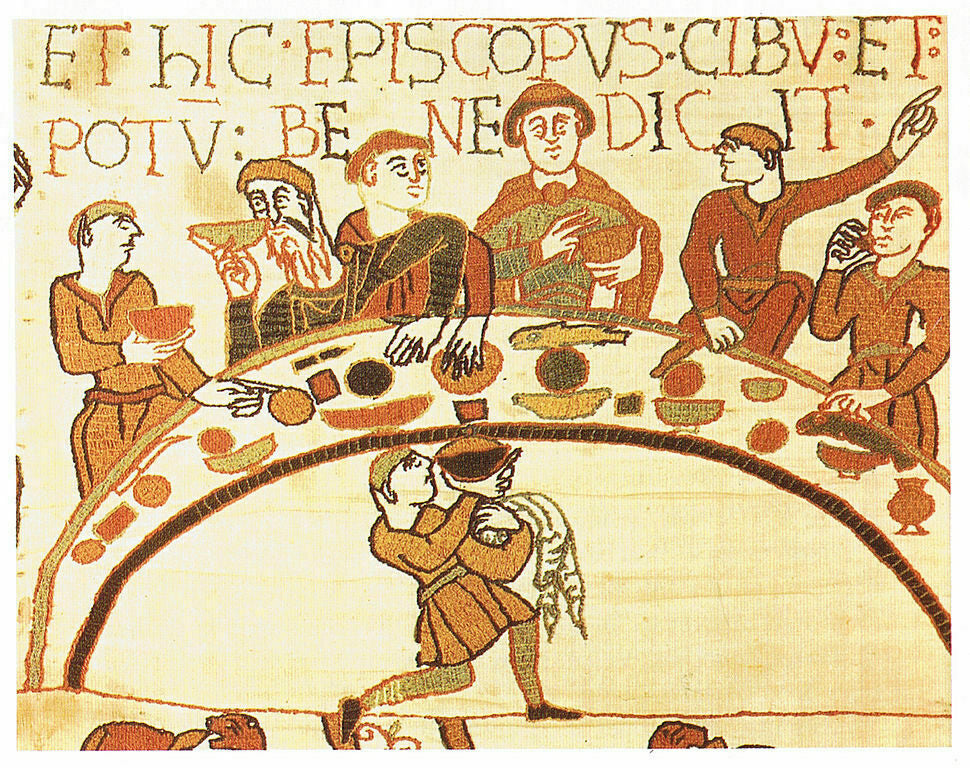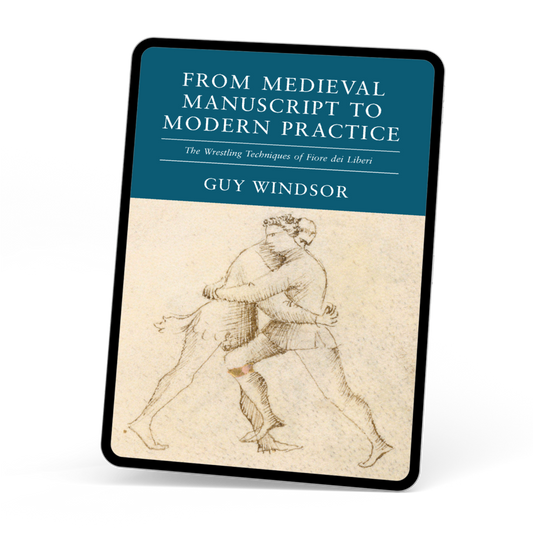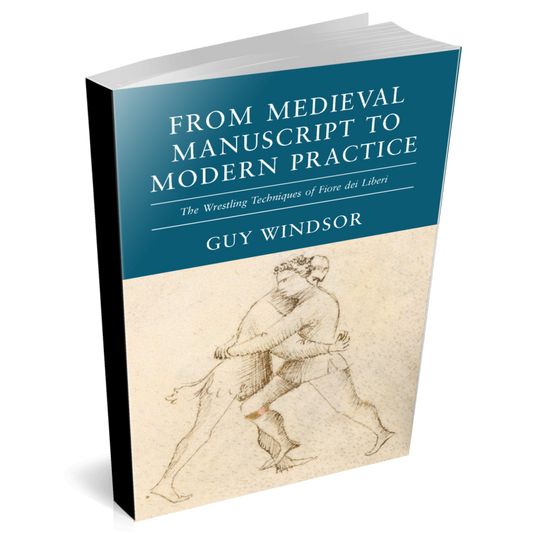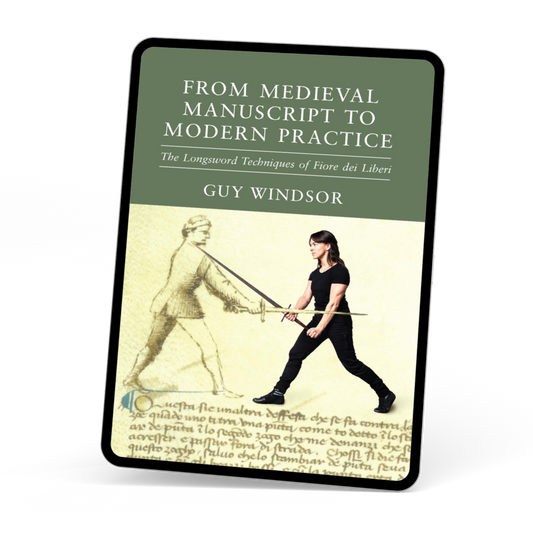You can also support the show at Patreon.com/TheSwordGuy Patrons get access to the episode transcriptions as they are produced, the opportunity to suggest questions for upcoming guests, and even some outtakes from the interviews. Join us!
Hello Sword People, and welcome to the final monthly challenge of the year. This one is a little different.
Before I introduce it, let me just refresh your memory about what the challenges are. Basically, they are alternatives to New Year's resolutions because I don't like New Year's resolutions very much, and the challenges so far this year have been: breaking a habit, adding a habit, sleeping - in other words, how to sleep better, food, (so eating better,) learning a new skill, working on stamina, working on strength, working on range of motion, working on footwork and working on striking. Now you may very well suppose that this month's challenge will have something to do with perhaps, well, we've done striking, let's have a look at throws. Or we’ve done striking, let's have a look at parrying or something like that. But no, we've done most of the aspects of solo training as I discuss in my book, The Windsor Method: The Principles of Solo Training. So the focus of these challenges is on solo training and rest is part of training. So the question we are addressing this month, December, is how do you recover?
Transcript
Hello, sword people, welcome to The Sword Guy podcast, this is your host, Dr Guy Windsor, Consulting Swordsman, teacher and writer. Join me for interviews with historical fencing instructors and experts from a wide range of related disciplines as we discuss swords, history, training and bringing the joy of historical martial arts into our modern lives.
This episode is going out on the 3rd of December, and so as you may be familiar with my monthly challenges, we are indeed due for the challenge of the month, which is a little bit different. And before I introduce it, let me just refresh your memory about what the challenges are. Basically, they are alternatives to New Year's resolutions because I don't like New Year's resolutions very much, and the challenges so far this year have been breaking a habit, adding a habit, sleeping - in other words, how to sleep better, food, (so eating better,) learning a new skill, working on stamina, working on strength, working on range of motion, working on footwork and working on striking. Now you may very well suppose that this month's challenge will have something to do with perhaps, well, we've done striking, let's have a look at throws. Or we’ve done striking, let's have a look at parrying or something like that. But no, we've done most of the aspects of solo training as I discuss in my book, The Windsor Method: The Principles of Solo Training. So the focus of these challenges is on solo training and rest is part of training. So the question we are addressing this month, December, is how do you recover?
Now, recovery can be divided into physical rest; so getting your body to recover from the exertions that you have put it through. And this can be gentle movement, gentle stretching, being still. Draining your legs is a good one. So the way you do that is you lie on your back with your legs up a wall and read a book for 10 minutes. And gravity literally drains the tissue fluid out of your feet and ankles and knees and into your body where it can be dealt with. That's a very useful thing for anyone who does a lot of footwork. I actually learnt about it when I read an article many, many years ago interviewing members of the English National Ballet, and one of the ballet dancers mentioned that all the ballerinas do this. I guess the ballerinos do it too, but it was definitely a ballerina who gave me the idea. So physical rest would also include eating properly, because nutrition is part of recovery. And of course, no discussion of physical rest is complete without sleep. You must also recover mentally, and that again involves sleep. But it also involves things like distractions, entertainment, socialising with friends, basically getting a break from the relentless focus on training. Because of course, you focus on your training relentlessly. I know you do. And lastly, it's useful to have a look at spiritual rest, which is about really recharging one's emotional batteries. So that could be spending time with friends or spending time alone, depending on your make up, whether you're an extrovert or an introvert. Also, things like meditation and, of course, also sleep. Now I'm banging on a lot about sleep, and if you go back to the relevant month, well, you can find all of the challenges at www.guywindsor.net/blog and put “monthly challenges” in the search field so you can find our discussion on how to sleep. You can also just look back through the podcast episodes.
But there is more to recovery than just eating and sleeping, and I will discuss it by reading you the relevant chapter from my book. Incidentally, of course, you should definitely go and buy my book if you haven't already, and you can find it at www.guywindsor.net/solo. But again, before I jump straight into that, one of my friends and colleagues, Anthony Rishard of Black Armoury in France. He emailed me the other day and I have to confess there's at least one… it's not a typo, it is simply an error of vocabulary, and I don't make too many of those. This one's a dilly. He sent me this very kind email, where he says: “I finally had a chance to read The Windsor Method. Just now finished it. Thanks for that. Plenty of great gems to help me improve in several areas,” which of course I'm very pleased to hear about because, you know, I like it when people write to me and say my books have plenty of great gems in them. To continue. And he says, “I'm afraid, however, that I've uncovered an inaccuracy you may wish to fix for future printings.” And if that isn't a very nice way of saying, Guy, you fucked up, I don't know what it is. He goes on: “On Page 181, last two paragraphs of Rest is Part of Training you have mistakenly used the term “annealing” in place of “tempering”.” And you know what? He's bloody, right, I did. He goes on: “Annealing is the heating of the steel to Ted, indeed, about 600 degrees centigrade.” I'm not sure what Ted is. I think it’s a technical blacksmithing term, [Update: 'ted' is a typo in Anthony's email- it should be 'red'!!] “followed by a very slow cooling. This allows the steel to re-crystallise in its softest possible state, in essence erasing any and all previous heat treatment.” So that's annealing. “Tempering is the reheating of quenched steel. Yes, between 170 and about 340 degrees centigrade to sacrifice a bit of hardness with gaining toughness, as you describe.” And then he finishes that off with, “Sorry for the lesson, but the blacksmith in me cringed a bit.” So and here's a funny thing. Firstly, I'm always delighted when people in a kind of friendly manner point out where I’ve made a mistake so I can then go fix it, which I will indeed do. But it's odd because I do actually know the difference between annealing and tempering and when I have actually gone and made knives in a part of a blacksmith’s “make a knife in a day” course, which I've spoken about before, we didn't anneal anything. We did temper it and we did actually, I remember having a discussion with the blacksmith about the difference between annealing and tempering, so it's not like, I don't know it, but I have this mental blind spot around the word annealing and tempering. And it's just, there it is in the book. It's kind of weird when you see these characteristic mistakes. And I don't know why I didn't get a blacksmith to read that section of the book. I bloody well should have done. I mean, I got a philosopher to read it for philosophy, and I got a doctor to read it because it's got medical stuff in it. And I got various historical swordsmanship people to read it, to see whether it's actually interesting to historical sword people and so on. And they all loved it. But I didn't get a blacksmith to read it, and I jolly well should have done. So thank you, Anthony, for the very helpful correction. I just wish I'd sent you the book before I published it. Now, without further ado, here is this section, Rest is Part of Training from the book and incidentally, I have corrected the annealing/tempering thing in this text and I will correct it in the e-book and printed versions. And if you have a printed version feel free to take a pen and make the correction yourself.
One often-overlooked element of training is rest: imagine a comfortable hammock slung from the branch of your training tree.
It can be very challenging to let go of the need to be always doing. Martial artists are often quite driven people, and the idea of taking a day off is weird. My mental hack for this is re-framing. As rest is part of training, taking a rest day is, well, training! So it totally counts as a training day. Only I’m resting.
This goes both ways though. I can view my physical training as work (because I’m a professional martial arts instructor). So on days when I’m overwhelmed with work and really need to get some work done, I should get some training done because that’s work. But on days when I’m feeling overworked, I should take some time off work and do something fun – like swinging a sword around. Training for me is either work, or play, depending on what framing makes it more likely that I’ll do it.
This shouldn’t work, but it does. Welcome to the inside of my head!
Rest is part of training. If you don’t rest, you break.
We can usefully divide ‘rest’ into “active rest”, and “passive rest”.
Passive rest is when you chill out on the sofa. Or go to sleep. Active rest is when you do something different to the exercises that made you tired, and the activity helps the rebuilding process.
Good examples of active rest include gentle stretching, going for a walk, breathing exercises, and deliberate meditation. How you need to rest is entirely dependent on what you are resting from. After walking 35 miles in one day (for a charity event in 2018), I did some really gentle stretching, and walked about a bit, but the most restorative thing of all was putting with my kids. We had driven past this place that had a putting green, the kids wanted to have a go (I generally detest golf), and the combination of their enthusiasm and the gentle moving around, was magic.
Recovery from training is a skill. Your body is probably quite good at it already, but as with everything, it can probably be improved. The practices I find most useful are meditation and breathing exercises, as well as stretching. You may also find that certain foods help after certain exercises: a big hit of protein after heavy weights, for example. But every body is different, so you need to experiment to find what works best for you. What makes you feel recovered?
The key thing is to recognise that actively encouraging the recovery process begins with your intention, and is expressed through your actions. Deciding that a day spent on the sofa enthusiastically stuffing your face is the thing your body actually needs right now is fine- if it really is what your body needs. Or perhaps you really need to lay off the carbs and go for a long walk in the woods? Your body knows, so ask it.
As a swordsman I’m naturally inclined to draw an analogy with how blades are made.
First you heat the steel red-hot, perhaps 600 degrees centigrade, to make it malleable, then hammer it into shape. This creates the desired crystalline structure in the steel itself.
Once you’ve got it as close as you can with the hammer, and the steel has cooled down but is still relatively soft, you grind it to the exact shape you want.
Then it’s time to heat it up again, to quenching heat, perhaps 800 degrees centigrade, then suddenly cool it down by quenching it. This can be done in oil, which produces a flash of flame, or in water producing billows of steam. This process makes the steel very hard, but also brittle.
So then it goes in for the tempering process, which heats it up again, but only a little, perhaps 200 degrees centigrade. You leave it in there for quite a while, and the steel relaxes, and loses some of that brittle hardness. So the blade is now hard, but also tough, and ready to be polished and sharpened.
Good rest as part of the training process has the same place as tempering when forging. It slackens off some of the hardness, making you less brittle, and ready to be polished and honed.
So your challenge for December is to rest well and yes, you are allowed to enjoy it.
Thanks for listening. I hope you enjoyed this little foray into the challenges. You can find the episode show notes at www.guywindsor.net/podcast. While you are there, you can sign up to my mailing list and I'll send you a free copy of my book, Sword Fighting for Writers, Game Designers and Martial Artists. I'd like to thank my patrons on Patreon for their kind support of the show. It lets me know that you care about the show and want it to continue. You can join us there for behind the scenes content and to submit your questions for future guests. That’s www.patreon.com/theswordguy. Thanks, as always, to Andrew Lawrence King for the harp accents. He originally recorded them for my Paradoxes of Defence audio project. But I'm sure he doesn't mind me using them here. In fact I know he doesn't because he said so, join me next week when I'll be talking to Shanee Nishry. She is a historical martial arts instructor and founder of Stratford Swords and a software engineer in the games industry. We first interacted, though, when she posted some photos of a very ambitious woodworking project she's working on. On Twitter, I think it was, and I commented on it and we got chatting about woodworking and what have you. And yes, there is quite a lot of woodworking chatter in the episode. We do talk about swords, but we talk a great deal also about woodwork. And why not? Because it's fascinating. And honestly, in my head, there's not a great deal of difference. So subscribe to the show wherever you get your podcasts from, and while you're there, please do rate the show and if you have an extra minute, do leave a review, it really does help. Thanks for listening and I will see you next week.





